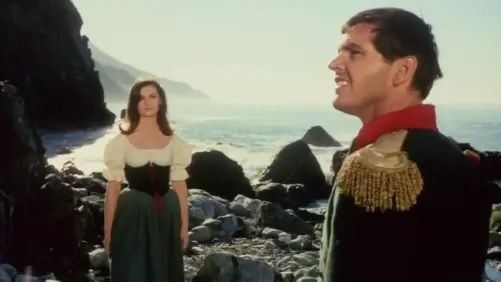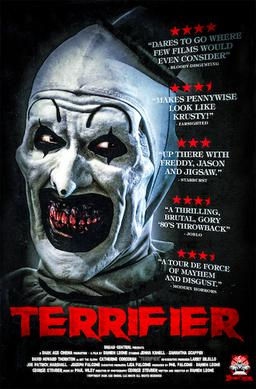The Terror (1963) review
- Jeremy Kelly
- Oct 5, 2023
- 3 min read
5. The Terror (1963)
Directed by: Roger Corman
Produced by: Roger Corman
Screenplay by: Leo Gordon, Jack Hill
Starring: Boris Karloff, Jack Nicholson, Sandra Knight

The story of the making of Roger Corman’s “The Terror” is one of the most unique I’ve ever heard of, and far more interesting than the movie itself. If you’re familiar with the phrase “making it up as you go,” that can best be applied here. But I’m getting ahead of myself; released in 1963, this film came out around the same time as Corman’s adaptations of several Edgar Allen Poe stories, the most recent being “The Raven,” which featured an aging Boris Karloff and a young Jack Nicholson, both of whom also appear in this. Nicholson plays André, a lieutenant in the French military who stumbles across a mystery involving a young woman, a creepy old witch, and the reclusive Baron von Leppe (Karloff). Featuring some aesthetically pleasing visuals, the film nevertheless suffers due to mostly repetitive dialogue and an utterly incoherent plot thanks to a litany of factors.
Taking place in the early 19th century, the story begins with André as he’s been separated from his regiment, lost and near-collapse on a beach. He’s saved and subsequently smitten by the beautiful Helene (Sandra Knight); but she soon disappears, and André is washed out by the waves, eventually waking up in the home of a peasant witch named Katrina (Dorothy Neumann). She tells him there’s no Helene other than her pet bird, which supposedly attacked him on the water. Katrina’s servant Gustaf (Jonathan Haze) confides in secret that the woman can be found at von Leppe’s castle. André meets the Baron, who shows him a portrait of his deceased wife Ilsa, who bears resemblance to Helene despite being dead for 20 years, and whom the Baron now believes is haunting him. Who is this woman, what is the Baron hiding about her, and how does the witch connect to them?

The movie is blended with scenes of genuine emotion as well as head-scratching weirdness; the former obviously comes through with Karloff, as he really sells what a tortured soul the Baron is, harboring this guilt and seeking any release, but terrified of the cost. For one of his earliest—but not the earliest—leading roles, Nicholson is decent, but mostly understated; he essentially has the same role as the viewer, trying to figure out what’s going on. It’s a big, wild mystery involving hypnosis, shapeshifting, back stories of adultery and murder, and mistaken identity. A good chunk of the action is basically characters walking down dark corridors, which is a shame, because I’m a fan of the Gothic scenery in and around the castle; the aesthetics are quite good, specifically the color palate and use of fog. The scenes featuring the beach and woods, however, look dreadfully dull by comparison.
Okay, so what makes this film such a specific anomaly? Well, it all happened because Corman had a free weekend. I’m not joking; Corman finished filming “The Raven” two days ahead of schedule, so rather than letting those two days go to waste, he did a quick brainstorming session with screenwriter Leo Gordon, and got the same crew to shoot footage with Karloff on the same sets, with just a vague storyline and no script. Afterwards, several months went by, with Corman eventually passing the project on to several other directors—one of them being a young Francis Ford Coppola—resulting in a mostly random mishmash of plot points only somewhat connected to each other. Corman would eventually return for reshoots, which consisted of a couple new scenes where André and the Baron’s servant Stefan (Dick Miller) try to make sense of everything, to little effect, looking rushed as though they were written at the last minute.

It’s ridiculous to think that a feature film could be made like “The Terror,” the equivalent of a school group project with each student taking turns doing all the work. As a result, there are plenty of inconsistencies, both in character traits and picture quality; some shots are so heavily draped in shadow, you can barely see the characters’ faces. There are also odd scene transitions, awkward lines and seemingly random occurrences, like the opening scene where the Baron follows a trail of blood until he finds a skeleton that’s never referred to again. But the movie still has a certain charm; I like the music by Ronald Stein, and there are neat visual highlights, like when Gustav gets his eyes pecked out and bloodied by the bird. This came out shortly after “The Birds,” though the similarities stop there; it’s interesting to watch as a curiosity piece—and public domain, so easy to do so—but there’s not much replay value other than marveling at how absurd the product is based on the circumstances.
My rating: 5.5/10





Comments